Introduction
Welcome to Forum 48. In this issue, Mary Ormsby explains how we perceive different colours and how this is important for manufacturers. We also have a report on Eric Woodcock’s recent excellent talk on electric vehicles.
On 24th November we have our first Research Student Seminar. The intention is to give PhD students an opportunity to present aspects of their research to a lay audience, and for us to engage in discussion with them. Please support this if you can.
SUES has entered the world of social media! We now have a Facebook group which you will find at: facebook.com/groups/southportues. This will enable us to publicise our events on local news sites. If you have a Facebook account, I hope you will join the group and take part in discussions that develop.
Chris Nelson
Coming up in November and December 2023
SUES Student Research Seminar
Friday 24th November at 2:30 pm. All Saints Church Hall, Park Road, Southport, PR9 9JR.
David Coombes (University of the West of England)
Multi-Cultural Education: a case study of the learning experiences of international military students.
David is a serving member of the RAF and currently manages instructor development and international instructor training within the Joint Services Command and Staff College at the UK Defence Academy.
Evidence from the Chilcot Inquiry (2016) highlighted numerous cultural failings within the UK military that centred around ethnocentric attitudes and the need to develop respectful and empathetic skills, to understand international partners and opponents alike. The highlighted deficiencies were regarded as an impediment to meeting the challenges of the contemporary, multinational operating environment.
By examining Multi-Cultural Education within a specific military context from the perspective of the learner, this research aims to provide guidance as to how the UK Defence Academy might develop intercultural competence within its staff and students. In targeting an area lacking in research, this study will also start to build a corpus of work within Professional Military Education supported by the adoption of more contemporary approaches to research, such as critical realism.
Natalie Saunders (Edge Hill University)
Blending in: exploring autistic girls’ experiences of friendships.
Natalie previously worked in a specialist school for autistic children in Southport. It was through her experiences working with autistic children that she decided to pursue this line of study.
I explored the intricacies of friendships among autistic girls, employing a qualitative study approach. My investigation delved into the reciprocal nature of social interactions, acknowledging and valuing the unique perspectives of autistic individuals. Through in-depth interviews, I directly engaged with the participants, unravelling their distinctive and personal experiences in the realm of social connections. The focus of my study was on the nuanced process of making and sustaining friendships, shedding light on the accessibility of friendships and the challenges these individuals encounter. By amplifying the voices of autistic girls, this research not only contributes valuable insights into the social dynamics they navigate but also underscores the significance of understanding and bridging communication gaps between autistic and neurotypical experiences.
Talk by Ed Montana-Williams
Turner and Constable, Rivals for Greatness
Friday 8th December at 2:30 pm. All Saints Church Hall, Park Road, Southport, PR9 9JR.
Enrolling for 2024 Courses
The Middle Ages are drawing to a close in Peter Firth’s successful and well-attended course and, if you have not already done so, it is time to enrol for our 2024 courses.
Roger Mitchell on Colonial and Post Colonial America – History, Art and Architecture
Mondays from 10:30 am to 12:30 am at All Saints Church Hall.
8th, 15th, 22nd, 29th January, 5th, 12th, 26th February, 4th March 2024
(Eight sessions: Course Fee £40)
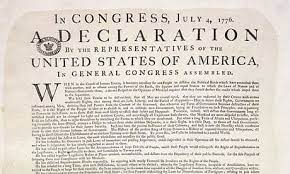
The focus of the course is on the 17th and 18th centuries during which new settlements on the eastern seaboard of North America became a new country – the United States of America. George Washington, John Adams and Thomas Jefferson head the cast list. We take the story into the 19th century with the art of the Hudson River School and the architecture of Washington DC.
Alan Potter on Technology – Understanding Just How Things Work!
Mon 8th, Thurs 11th, Mon 15th, Thurs 18th, Mon 22nd & Mon 29th April 2024.
10:30 am to 12:30 am at All Saints Church Hall. (Six sessions: Course fee £30)

Using up-to-date research and illustrations, this course uncovers the way in which appliances that we rely on every day actually work to enrich our lives. As we begin to know them better, we can understand how to get the best out of them. Along the way, we will wonder at the ingenuity of humans who have created such amazing, life-enhancing devices.
You can enrol on a course at any time by contacting Rob Firth by email at suesmembers74@gmail.com or by post at 18 Coudray Rd, Southport, PR9 9NL. There is no need to fill in another membership form: just let Rob know which course you want to join, and how and when you have paid. The preferred method is bank transfer, or you can send a cheque to Rob.
Meeting Report: Lankie ‘Lekkies by Eric Woodcock, 27 October 2023
We had a fine turnout of members, and several guests, for this talk by engineer, and SUES member, Eric Woodcock. Eric’s talk covered the history of electric vehicles, including those developed or manufactured in this part of the country, not only in Leyland, but also in Southport and Burscough.
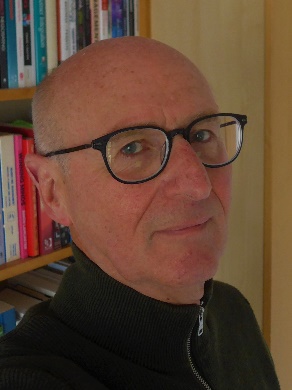
Eric began by informing us that electric vehicles have been a reality for more than 120 years. After the perfection of the rechargeable lead-acid battery by Camille Fauré in the 1880s, the development of electric cars and vans became a realistic proposition. Long-distance travel and haulage were dominated by the railways, but there was a desire for a cleaner and more convenient form of transport to replace horses for local travel, deliveries, etc., and vehicles powered by petrol, electricity and steam were all contenders. The first electric car was made by Volk of Brighton in 1887, two years after Carl Benz produced the first petrol car. Electric cars became very popular around the turn of the 20th century (petrol vehicles were unreliable before the 1920s); by 1900 there were 1,500 electric taxis in the USA and by 1910 there were 10,000 electric commercial vehicles.
In the UK, Harrods purchased 10 Walker delivery vans. They eventually had 60 vans with a 30- to 40-mile range, some surviving until the late 1960s, and Harrods even had its own power station to provide them with power.
With a market initially dominated by American vehicles, assembly and manufacture was begun in 1916 by the General Vehicle Company in Birmingham, although an electric parcel van for Royal Mail had been produced in the UK by Ward as early as 1888. The banning of imports during the First World War created an opportunity for British manufacturers. A particularly successful use of the technology was in refuse collection. The main manufacturer was Richard Garrett of Leiston, whose refuse vehicles were used by several local authorities. Glasgow, in particular, operated a system between 1926 and 1964 for collecting refuse, sorting it, selling the metals and burning other material to generate electricity to power the vehicles.
The Lancashire part of the story begins in 1923. Outram’s bakery in Southport decided to develop its own electric delivery vans and set up Victor Electrics to produce them, with a factory in Southport, and later in Burscough. These vehicles were sold to other bakeries, and also to the GPO and United Dairies. The factory operated until the 1950s.
We are all familiar with electric milk floats. Brush of Loughborough produced the first 3-wheel float (based on an existing factory stillage truck design). T H Lewis (owned by Express Dairy) produced an alternative type, as did Wales & Edwards of Shrewsbury who supplied United Dairies. There were 21,000 electric milk floats in Britain in 1955 and 40,000 in 1970. By the 1960s there were three main manufacturers: Wales & Edwards, Smiths of Gateshead and Morrison-Electricars of Leicester and Tredegar. Production ceased in the 1990s as the traditional milk round declined; however, Bates’ Dairy in Southport still operates a fleet of 24 floats.
The oil crisis of the 1970s created a new interest in electric commercial vehicles, and an electric version of the Bedford CF van with a range of 70 miles was developed; 400 were built and the biggest users were Electricity Boards. The same technology was used in some Freight Rover vans (then part of the Leyland Trucks family).
At this point, Eric himself becomes part of the story. He led a project at Leyland Motors in the early 1980s to develop an electric version of the 7.5 tonne Leyland Terrier truck. Chloride (in Swinton) provided the battery, motor and charging equipment and the vehicles were assembled by W&E in Shrewsbury. The Terrier’s replacement, the Roadrunner, was also produced in electrically-powered form. However, privatisation and other initiatives of the Thatcher government damaged the opportunities to develop electric vehicles further at this time.
Some 20 years later, Smiths produced some electric vans for the carrier TNT, which were not successful. LTI (London Taxis International) developed an electric delivery van, with design input from potential customers such as Tesco. Only 400 were sold and the business (Modec) entered administration in 2011. However, by this time, new battery technology (lithium-ion phosphate) was available and Leyland Trucks led a partnership to develop a second-generation electric lorry. This is now in production, assembled in the Netherlands, and is in use by Amazon UK.
The mainstream vehicle manufacturers are now making electric vehicles successful, with small electric vans (and of course cars) being produced in large numbers. The Stellantis (Vauxhall) factory at Ellesmere Port now makes only electric vans. Arrival (with investment from Kia and Hyundai) develops vehicles in Oxfordshire and expects to produce large numbers of vans for customers such as UPS and Royal Mail.
Eric concluded by commenting that, while electric vehicles are currently in the news, and portrayed as new and high-tech, they have their origins in the 19th century and, while electric cars disappeared for almost 100 years, battery-powered commercial vehicles have always been with us, particularly in the UK which in 1970 had the largest number in the world (mostly milk floats).
Eric gave us a fascinating, informative and well-structured talk, beautifully illustrated with photographs of all the electric vehicles, ancient and modern, to which he introduced us. In doing so he demonstrated the deep knowledge and understanding which comes only from many years spent working in the development of electric vehicle technology. He certainly inspired his audience, as the talk was followed by a lively Q&A session, which raised some interesting and thought-provoking issues such as the need for secure and ethical sourcing from China of the materials required for the batteries in our vehicles (and also mobile phones).
Chris Nelson
The Perception & Measurement of Colour
In September last year during the late Queen Elizabeth’s funeral, and again at the Trooping of the Colour in June, we were spectators to what Britain does best, ‘pageantry’. But have you ever stopped to wonder how all those uniforms, although they must be of different ages, are exactly the same colour? The answer of course is that the manufacturers of the cloth must always use the same ‘recipe’ for dying the cloth. In addition, though, I’m sure they will measure the colour of their product to ensure it is the same, batch-to-batch, but how do they do that?
Controlling the colour of items is a requirement across many industries, fashion, decorating, and even in building construction to ensure that all the windows in a building look the same when you see through them (transmission) and when light is reflected off them (reflection).
To enable industries to measure colour in a consistent way various International Standards for how it is measured and recorded have been developed and agreed, and instrument makers have developed robust table top instruments to do the measurements. An example of the latter is that you can now take a sample of paper or fabric to B&Q and they can measure and mix an exact colour match.
Measurement of Colour
Three factors influence how we perceive colour:
- The article itself
- What type of light we view it under – light source
- Who observes the article
Any measurement taken needs to control the last two of these variables.
Light Source
We all know from experience that things look different in moonlight compared to daylight, and in full sun compared to shade. Think of trees at dawn or a bright red car viewed in daylight compared to under a street lamp.
This is because light from the sun and other sources is made up of different wavelengths of light, and each wavelength is a particular colour.
Objects appear different colours because they absorb some colours (wavelengths) and reflect or transmit others. The colour we see is a result of the wavelengths that are reflected or transmitted, depending on whether we are looking at an object or looking through it.
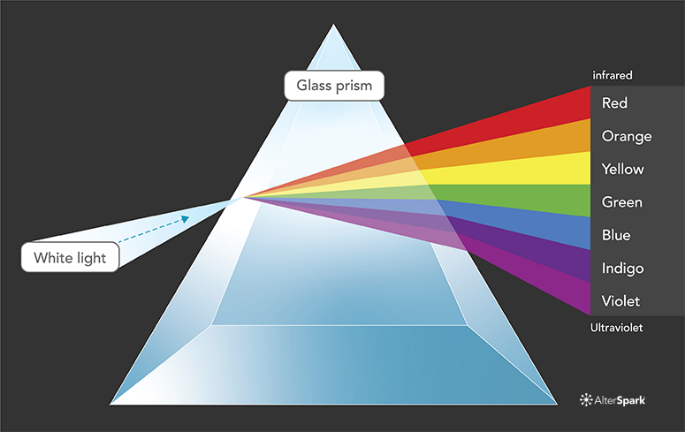
White objects appear white because they reflect all colours. Black objects absorb all colours, so no light is reflected, and they appear black.
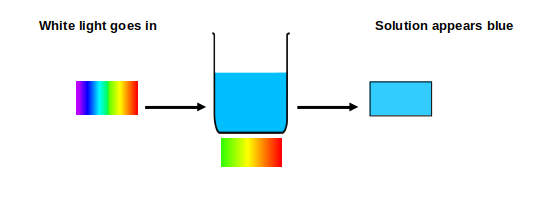
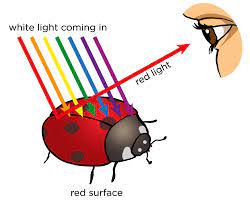
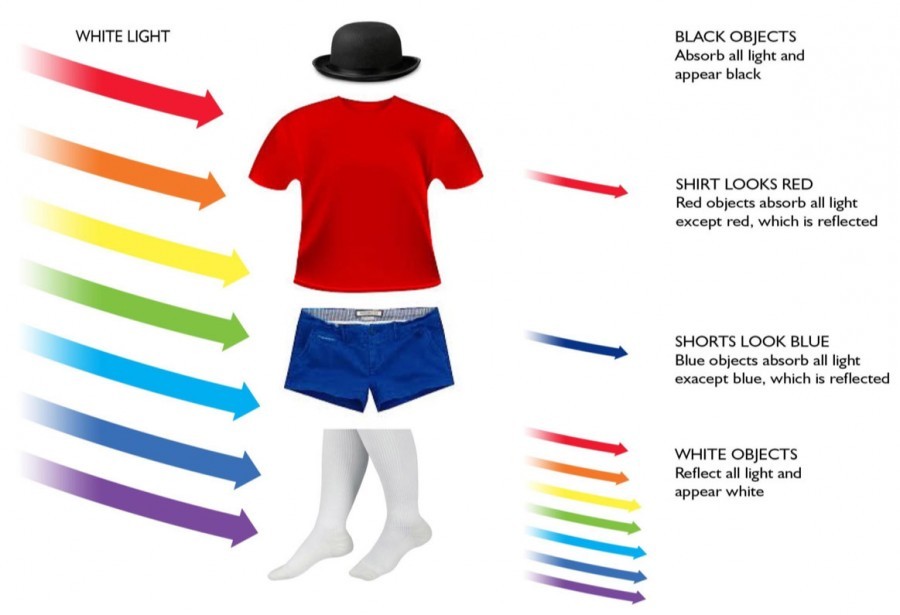
Different lights – Different Colours
In white light the shirt looks red because the shirt only reflects red waves and absorbs all other colours. Similarly, the shorts look blue because they reflect the blue light and absorb green, yellow and red.
If we looked at the same image in ‘blue light’ the shirt would appear black (because in ‘blue light’ there is no ‘red light’ to reflect) but the shorts would remain blue.
Industry has defined different light sources; by this we mean they have agreed the ‘spectral composition’ of the light. So we have a standard for daylight, the D65 source, and another for fluorescent light, the F2 source, and there are several others.
An example of the use of this type of measurement in practice is that a packaging manufacturer will want to ensure their packaging is appealing in store lighting and in normal lighting.
The Observer – Human Eye
So, how do we see colour? We see colour by virtue of the retina at the back of our eyes. The retina contains two types of photoreceptors – rods and cones. The rods let us see things in black, white and grey while the cones detect colour. The cones only work when the light is bright enough, this is why we cannot see colours at night.
There are three types of cones in the human eye, each sensitive to different wavelengths of the visible spectrum. These cones have traditionally been known as blue-sensitive, green-sensitive and red-sensitive, although they are each actually responsive to a range of wavelengths.
The colour receptors in the brain perceive signals from the retina as different colours. Some estimates state that humans are able to distinguish about 10 million colours.
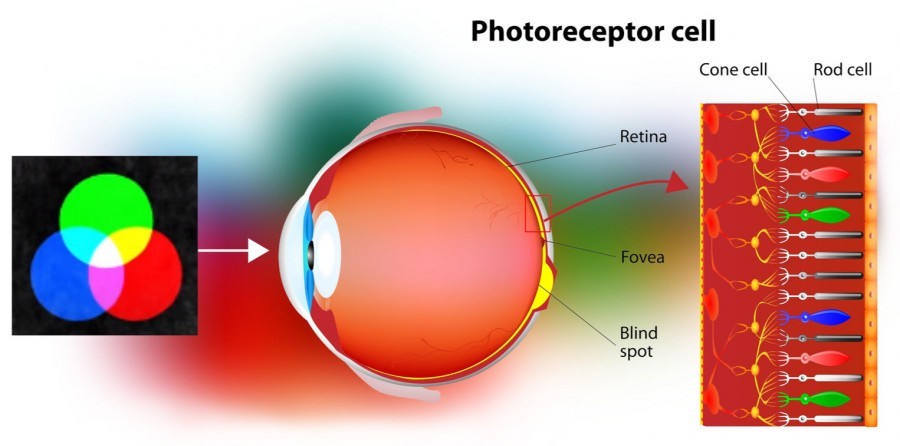
To measure colour, industry has had to define a ‘standard observer’, because no two of us see exactly the same colour due to natural variations in the cones in our retina. This standardisation was done by lengthy experiments and resulted in the definition of a ‘standard observer’ which has the red, green and blue cone sensitivity of the ‘average’ human.
Recording Colour
Having measured the colour, we need to be able to record it and share the information with others. Different ‘scales’ have been developed for measuring colour, the “Lab” colour space is one of these and is popular because it allows colour to be plotted on either a 2 dimensional or 3-dimensional graph.
- “L” represents how light or dark the colour
- “a” represents how much red-green it has: +a is red; -a is green
- “b” represents the yellow-blue content: +b is yellow; -b is blue.
- For example, in the diagram on the previous page, the pure red T-shirt might have co-ordinates (20,0) while the blue shorts might be (-15,0).
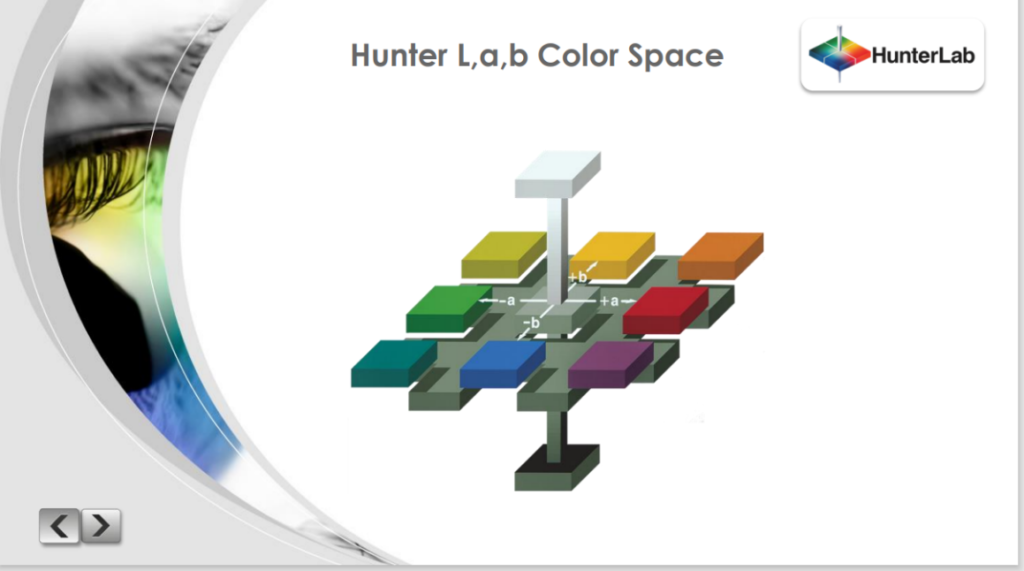
Robust Instruments
It is one thing to control these variables and measure colour in a laboratory, but industry needs robust, easy to use instruments that don’t require a degree in physics to operate! Companies such as HunterLab have developed a range of table-top and even hand-held instruments which can make precise measurements quickly and repeatedly, and so are useful in Quality Control departments, and in B&Q!!
They have made instruments which can measure the colour of paper, cloth and windows and also liquids and powders, as shown by the images below, because the need to measure and control colour is important to so many industries.
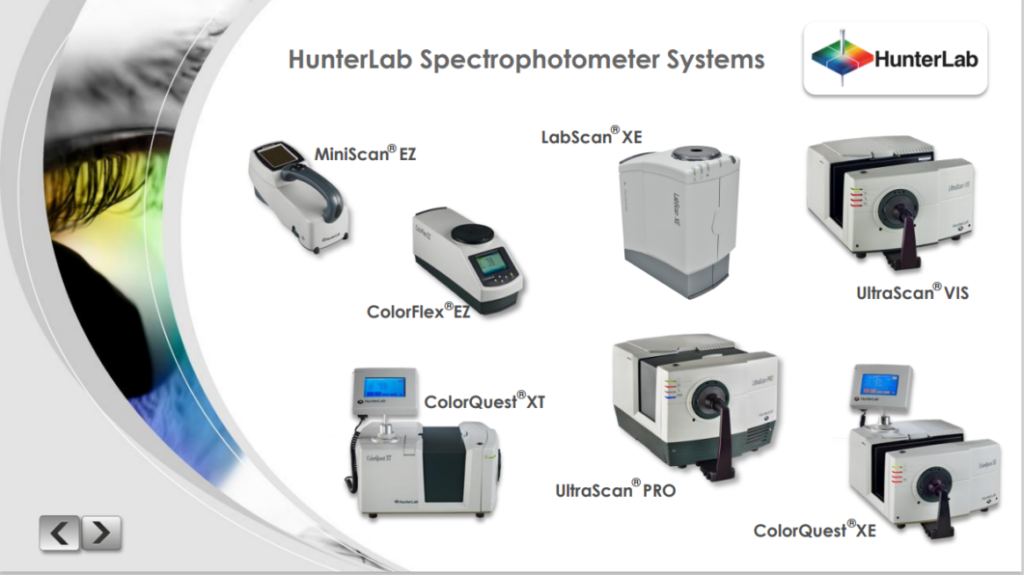
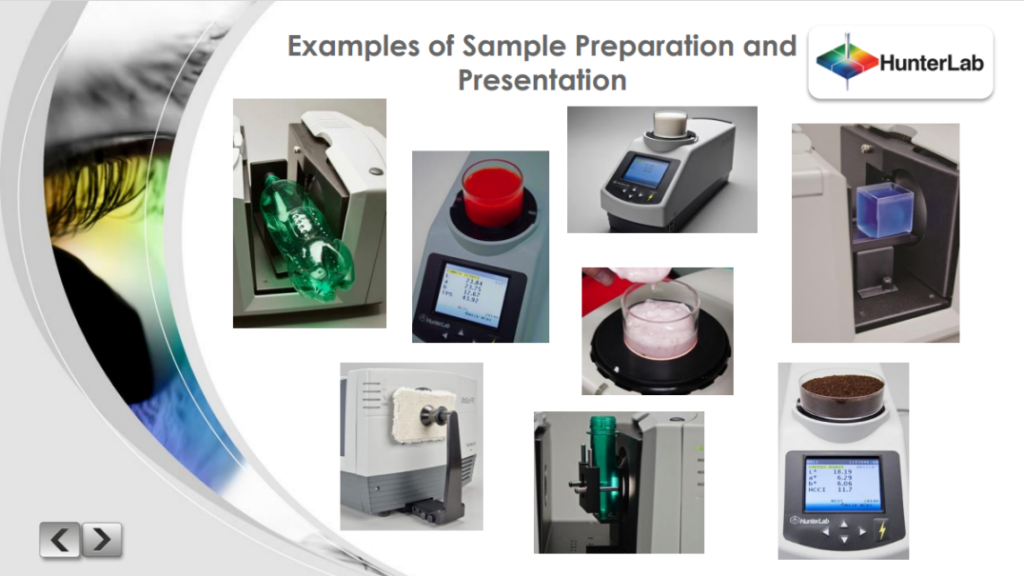
There are other companies who provide similar instruments, but I have chosen to use HunterLab in this article because these were the instruments I was familiar with when I worked at Pilkington.
So, as you can see, for items which we take for granted like windows, paints and paper, and even items like packaging which we throw away, there are some sophisticated scientific measurements behind their production.
Mary Ormsby
Contacts
Chair: Alan Potter
alanspotter@hotmail.com
07713 428670
Secretary: Roger Mitchell
rg.mitchell@btinternet.com
01695 423594 (Texts preferred to calls)
Membership Secretary: Rob Firth
suesmembers74@gmail.com
01704 535914
Forum Editor: Chris Nelson
chris@niddart.co.uk
07960 117719
Facebook: facebook.com/groups/southportues
See our archive for previous editions of the SUES Forum!